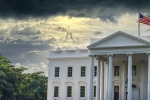Tax Insights: US tariffs and Canadian countermeasures ─ How will it affect Canadian businesses?
September 02, 2025
Issue 2025-07R4
September 2, 2025 update: On August 22, 2025, Prime Minister Mark Carney announced that, starting September 1, 2025, Canada will remove its 25% surtax on US-origin imports into Canada if those imports qualify as originating goods under the Canada-United States-Mexico Agreement (CUSMA); this removal does not apply to aluminum and steel goods and motor vehicles that are subject to a surtax order.
In retaliation to US President Donald Trump’s tariffs on Canadian-origin goods imported into the United States, Canada had implemented a 25% surtax on:
- $30 billion worth of US-origin goods, effective March 4, 2025 (US Surtax Order (2025‑1))*
- an additional $29.8 billion worth of US-origin goods, effective March 13, 2025 (US Surtax Order (Steel and Aluminum 2025))*
- certain US-origin fully assembled vehicles (US Surtax Order (Motor Vehicles 2025))*
Starting September 1, 2025, the 25% Canadian surtax will no longer apply to goods listed in US Surtax Order:
- (2025-1) and this order has been repealed, effective September 1, 2025
- (Steel and Aluminum 2025) that are not steel or aluminum goods and qualify for CUSMA treatment, and this order has been amended to reflect these changes
The 25% Canadian surtax will continue to apply to goods listed in amended US Surtax Orders (Steel and Aluminum 2025) and (Motor Vehicles 2025).
A remission of Canadian surtax may be available for eligible goods. Importers of goods that were previously subject to the 25% surtax may be able to receive a refund of any surtax paid, retroactive to the date of entry of the surtax order.
Canada’s removal of its retaliatory surtax on most US-origin goods provides significant savings to Canadian businesses that import goods from the United States.
Prime Minister Carney also announced that the Canadian government will begin preparations for the CUSMA review process, which is due next year, by launching consultations in September “to assess Canadian priorities in the new global trade environment.”
As previously mentioned in our:
- August 7, 2025 update, on July 31, 2025, US President Donald Trump signed an executive order that, effective August 1, 2025, increased the tariff rate from 25% to 35% on imported goods from Canada (and Mexico) that do not qualify as originating goods under the CUSMA. Any articles of Canada that are determined by US Customs and Border Protection to have been transshipped to evade the tariffs will, instead, be subject to a punitive 40% tariff rate.
- March 4, 2025 update, on March 3, 2025, President Trump confirmed the end of the 30-day pause on his February 1, 2025 executive orders and announced that the US will impose tariffs on imported goods from Canada and Mexico, starting on March 4, 2025 (those executive orders were amended on March 2, 2025, so that duty-free de minimis treatment (which allows shipments of goods with a total value of US$800 or less per person per day to be imported without duties) would continue to be available until the time that the US government has adequate systems in place to process and collect these duties and tariffs – for recent developments on the de minimis treatment, see our Tax Insights “US eliminates de minimis shipment exemption: What it means for Canadian exporters”). Furthermore, changes to tariffs on Chinese-origin imports have since been made.
- March 7, 2025 update, on March 6, 2025, President Trump signed two executive orders that, effective March 7, 2025:
- exempt imported goods from Canada and Mexico that qualify as originating goods under the CUSMA from the tariff (this includes many materials used in the automotive manufacturing sector)
- reduce the tariff rate to 10% for imports of potash from Canada and Mexico
To take advantage of the benefits available under the CUSMA, the goods must meet specific criteria (such as being wholly obtained or produced, or produced of materials, from the originating area, or that meet product specific rules of origin). Importers must maintain records, such as the certification of origin, to prove that the goods meet the CUSMA requirements. Businesses should review their goods to determine their eligibility and compliance under the CUSMA.
The remainder of this Tax Insights was published on February 4, 2025. Except for a minor revision to the title, it has not been altered to reflect the developments and announcements from March 3 to March 6, 2025, July 31, 2025 and August 22, 2025 by President Trump and/or the Canadian government.
* For more information, see Canada Border Services Agency Customs Notice at www.cbsa-asfc.gc.ca/publications/cn-ad/menu-eng.html:
- 25-10: United States Surtax Order (2025-1)
- 25-11: United States Surtax Order (Steel and Aluminum 2025)
- 25-15: United States Surtax Order (Motor Vehicles 2025) (see also our Tax Insights “US tariffs on imports of automobiles and automobile parts from Canada”)
In brief
What happened?
On February 1, 2025, United States (US) President Donald Trump signed three executive orders that impose tariffs on imported goods, effective February 4, 2025, from:
- Canada – a 25% tariff, except that energy products will be subject to a 10% tariff
- Mexico – a 25% tariff
- China – an additional 10% tariff on top of existing tariffs
However, on February 3, 2025, the US agreed to delay implementing these tariffs on Canadian and Mexican imports for 30 days to allow for further negotiations with Canada and Mexico on enhancing border security, among other issues. If Canada and the US cannot reach an agreement, the US could potentially start applying tariffs based on the executive order on Canadian-origin goods imported into the US in the near future. The executive order that applies to China remains in effect.
These orders, issued under the International Emergency Economic Powers Act (IEEPA), aim to pressure Canada, China and Mexico to take stronger measures against drug trafficking and illegal immigration, and are part of a broader strategy to protect American industries.
In response to the executive order on US tariffs, the Canadian government had announced a series of retaliatory measures, which would have included imposing its own 25% surtax on $155 billion worth of US goods. These countermeasures, which have also been paused for 30 days, are designed to protect Canadian industries and workers from the economic impact of potential US tariffs and to signal Canada's commitment to defend its trade interests.
Why is it relevant?
The potential US tariffs and Canadian surtax will increase costs for Canadian businesses, disrupt supply chains and reduce profit margins, all of which could transform the Canadian economy and may impede economic growth in Canada.
The US presidential executive order1 that is focussed on Canada emphasizes the need for enhanced border security and increased inspections to prevent the entry of illegal aliens and the smuggling of illicit substances; this will have significant implications for cross-border trade and the efficiency of supply chains.
Actions to consider
All businesses (including each multinational business), even those that are not subject to the potential US tariffs, should assess the economic impacts of these potential tariffs, because every business will be affected. Businesses should use data driven decisions based on tariff/surtax impact assessments and modelling to make strategic decisions and determine viable options going forward. Aligning financial and business strategies to include supply chain, tax, customs and international trade can reduce risks and avoid unexpected costs. Companies should optimize their operations to mitigate the negative effects of these potential tariffs/surtaxes and increased border security measures, and consider exploring new markets. Adopting a coordinated approach will be crucial for businesses navigating this challenging trade environment.
In detail
US tariffs
The executive order signed by President Trump on February 1, 2025 was to have taken effect 12:01am EST on February 4, 2025, but it has been temporarily paused for 30 days. The executive order would have applied a US tariff of:
- 25% on a wide range of goods, including agricultural products, manufactured goods and consumer items, significantly affecting the cost of Canadian products entering the US market
- 10% on energy or energy resources (i.e. crude oil, natural gas, lease condensates, natural gas liquids, refined petroleum products, uranium, coal, biofuels, geothermal heat, the kinetic movement of flowing water and critical minerals)
We estimate that a 25% tariff on Canadian products would result in approximately $73 billion per year in tariffs and a 10% tariff on energy resource products would result in $13 billion worth of tariffs annually.
The US administration’s justifications for these tariffs are to protect American jobs and industries from unfair trade practices and curb the influx of illegal aliens and substances into the US. The tariffs are also viewed as a mechanism to pressure Canada into making concessions during ongoing and future trade negotiations. However, this tactic has been met with significant criticism both domestically and internationally, as it will disrupt highly integrated cross-border supply chains and create uncertainty in the global market.
The executive order
The executive order includes several critical provisions in Section 2 that directly affect trade relations and border security:
- paragraph (d) states that, if Canada retaliates against the US by imposing import duties on US exports or similar measures, the President may increase or expand the scope of the duties imposed under this order to ensure their effectiveness; this provision underscores the US administration's commitment to maintaining the efficacy of its trade actions
- paragraph (g) specifies that no drawback, or refund of duties, will be available for the tariffs imposed under this order; this eliminates any potential financial relief for businesses affected by these tariffs
- paragraph (h) clarifies that duty-free de minimis treatment, which allows for goods below a certain value to be imported without duties, will not apply to the articles described in Section 2, paragraphs (a) and (b) of this order
PwC observes
The above provisions ensure strict enforcement of the new tariffs. Paragraph (d) is intended to discourage Canada from imposing retaliatory tariffs on US-origin imports, and paragraph (g) means that businesses operating in the US that could be affected by these tariffs will not have any opportunity to apply for certain relief, which is generally available for other tariffs or duties under the US drawback program.
Paragraph (h) is of particular significance as the language in this provision is also in the executive orders signed by President Trump relating to US tariffs on imports from Mexico and China. This provision will affect e-commerce shipments with a total value of US$800 or less per person per day that are distributed through Canada. These shipments will no longer benefit from duty-free entry into the US. This also affects Chinese-origin goods destined to the US from Canada. These shipments will now be subject to most-favoured-nation duty rates, or tariffs imposed under sections 201 or 301 of the US Trade Act of 1974, or section 232 of the US Trade Expansion Act of 1962, where applicable, plus other import costs (e.g. merchandise processing fee) and then the additional IEEPA 10% tariff on Chinese origin or, if the tariffs are implemented, a 25% tariff on Mexican or Canadian origin goods.
Canadian retaliatory surtax
On the same day that President Trump signed the executive orders on US tariffs, Canadian Prime Minister Justin Trudeau announced that Canada would impose its own 25% surtax on $155 billion worth of US goods. The imposition of this surtax will also be paused for 30 days and would only apply when the US applies its tariffs on Canadian goods.
The Canadian surtax would have targeted a broad range of American products, including agricultural goods, consumer products and industrial materials. For details, see Order in Council (#2025-0072)2 dated February 1, 2025. The Canadian surtax would have been applied in stages, with 25% applying on $30 billion of US-origin goods imported into Canada on the same date that the US would have applied its tariffs on Canadian goods imported into the US. It would have included certain live poultry and other poultry products, certain dairy products, certain eggs and egg products, orange juice, peanut butter, wine, spirits, beer, coffee, appliances, apparel, footwear, motorcycles, cosmetics and pulp and paper (see the Department of Finance Backgrounder3 dated February 4, 2025 for a full listing of the affected goods). Then, after a 21-day public comment period, Canada would impose a surtax on a supplemental list of imported goods worth $125 billion.
The Canadian government has indicated that these measures are necessary, if the US were to impose tariffs, to encourage the US to return to fair trade practices and mitigate the adverse effects on Canadian businesses.
Canadian remission of surtax program
If the Canadian surtax is implemented, the Canadian government will have a framework and process for Canadian businesses to request remission of this surtax on certain goods imported from the US. This process will allow for relief (under specific circumstances) from the payment of surtax, or the refund of surtax that have already been paid.
Remission requests will be considered when:
- goods used as inputs cannot be sourced domestically or reasonably from non-US sources
- in exceptional circumstances, to be reviewed on a case-by-case basis, there could be severe adverse effects on the Canadian economy
The Department of Finance, in consultation with other relevant federal departments, will assess these requests and make recommendations to the Minister of Finance, who has the authority to recommend remission to the Governor in Council. This process aims to mitigate the economic impact of the US tariffs on Canadian businesses and ensure that they are not unduly burdened. Businesses would submit inquiries or remission requests to the Department of Finance.
PwC observes
The proposed Canadian retaliatory measures are intended to address the unfair behaviour from the US, if the US were to impose tariffs on imports of Canadian goods. However, they would also increase costs for Canadian companies and (ultimately) consumers. Of particular concern is the risk that this could escalate the trade dispute, because Section 2, paragraph (d) of the US presidential executive order states that the US can increase the tariffs or expand their scope should Canada retaliate.
Unlike the US, Canada will allow Canadian importers to mitigate the impact of any potential surtax on US-origin goods through a remission process; companies will need to navigate this comprehensive process.
Implications for Canadian businesses
The imposition of these US tariffs and the enhanced border security measures would have several significant implications for Canadian businesses engaged in cross‑border trade with the US:
- Increased costs – The tariffs would raise the cost of exporting goods to the US, making Canadian products less competitive in the American market. This is particularly concerning for industries heavily reliant on US trade, such as manufacturing, agriculture and energy.
- Supply chain disruptions – Many Canadian businesses operate within highly integrated supply chains that span the US-Canada border. The tariffs and increased border inspections would disrupt these supply chains, leading to higher production costs and potential delays.
- Profit margins – Businesses may face reduced profit margins as they absorb some of the increased costs associated with tariffs. This could lead to lower business investment and slower growth.
- Market diversification – Companies may need to explore alternative markets to mitigate the negative impact of tariffs. However, finding new markets can be challenging and time-consuming, particularly for businesses that have long-established relationships with US customers.
- Currency fluctuations – The tariffs and border security measures may lead to fluctuations in the Canadian dollar, affecting the overall economic stability and purchasing power of Canadian businesses.
How to adapt to tariffs and enhanced border security measures
Several strategies can help Canadian businesses adapt to any new US tariffs (if they are implemented) and enhanced border security measures:
- Implement cost-saving tactics and explore duty drawback programs – Renegotiating supplier contracts, optimizing production processes and reducing operational inefficiencies can offset increased tariff expenses. Additionally, duty drawback programs can refund duties paid on imported goods that are subsequently exported, notwithstanding the US’s restriction on using the drawback provisions for US tariff purposes.
- Develop a deeper understanding of your supply chain risks and opportunities – Do you have a comprehensive understanding of your entire supply chain and how the tariffs will affect it? What is your position within the supply chain, and what does that mean for your options? To help answer these questions, map your supply chain, considering both upstream suppliers and ultimate downstream consumers. Then, evaluate the short- and long-term impacts, considering tariffs, demand and supply dynamics, capacity availability, alternative suppliers and substitute products.
- Run a scenario analysis and strengthen your risk management program – Explore potential scenarios, including the potential length of the current trade dispute and possible end results. How does this affect your strategic options? This can also include larger questions, such as whether there is a risk to your business’s economic viability. In addition to scenario planning, consider contingency strategies and regular reviews of risk factors as part of your development of a comprehensive risk management plan.
- Take advantage of trade instruments to diversify your supply chains – Alternative suppliers and/or manufacturing locations can reduce your dependency on cross-border trade. This can help mitigate the negative effects of any new tariffs and open new business opportunities. Consider sourcing from countries with favourable or free trade agreements and using foreign trade zones to defer, reduce or eliminate tariffs on imported goods.
- Enhance compliance mechanisms – Accurate tariff classifications and country-of-origin determinations help avoid overpayments and penalties. Additionally, proper documentation and adherence to customs and border security regulations can reduce the risk of delays and penalties.
- Assess and adjust tax strategies – Evaluate transfer pricing policies and transactional characterizations while considering the overall income tax implications and opportunities of supply chain decisions, including the mix of income, tax attributes and incentives.
- Accelerate reinvention efforts – Identifying, developing and expanding into new markets will help companies reduce their reliance on the US market. Exploring the value-creation potential in adjacent sectors can help you capture opportunities in growth segments, such as in the defence industrial base sector.
- Incorporate new risks and opportunities into your acquisition strategy – Consider opportunities to create economies of scale and reduce operational costs by acquiring companies that may have difficulty withstanding US tariffs. Other acquisition opportunities include companies that produce goods within the US or operate in other countries that are not subject to US tariffs.
- Advocate and collaborate – Engage with industry associations and government bodies to advocate for fair trade practices, seek support for affected industries and encourage policies to remove interprovincial trade barriers.
The takeaway
PwC can help Canadian businesses respond to the current tariff situation. We have developed a proprietary Tariff Impact Assessment tool that can help your business examine or visualize its supply chain by using your historical import data. It provides insights into your business’s potential exposure to any US tariffs or Canadian surtax, helping to identify areas of risk and opportunity, as well as navigate the ethical sourcing landscape proactively.
Our multidisciplinary team has specializations in tariffs, economics, industry, supply and value chain, business strategy and tax. We can help you navigate this evolving complex situation by:
- mapping out the supply chain from upstream to downstream and ultimate consumers
- assessing the specific short- and long-term impacts on your business and developing a list of risks and opportunities specific to your business
- developing a short-term strategy to minimize your potential tariff exposure
- assisting you with obtaining support from the federal, provincial and territorial governments
- given the risks and opportunities, helping you develop a long-term business strategy that adapts to the long-term reality that this situation may create
- providing scenario planning and strategic options modelling
While the imposition of tariffs by the US and Canada’s retaliatory measures would present significant challenges, Canadian businesses can take proactive steps to mitigate the impact and adapt to the evolving trade landscape. By mapping supply chains and conducting a thorough tariff impact assessment, businesses can better understand how the tariffs could affect their business and develop strategies to effectively mitigate these challenges.
1. Executive Order “Imposing Duties to Address the Flow of Illicit Drugs Across our Northern Border” (February 1, 2025).
2. Government of Canada, Orders in Council, PC Number 2025-0072, February 1, 2025.
3. Department of Finance Backgrounder “List of products from the United States subject to 25 per cent tariffs effective February 4, 2025” (released February 2, 2025).
Contact us



Industrial Manufacturing and Automotive Sector Lead, PwC Canada
Tel: +1 416 320 8175



National Growth Priorities Markets Leader, Partner International Tax, PwC Canada

National Leader of Economics & Policy Practice, PwC Canada
Tel: +1 416 520 5859
Contact us



















